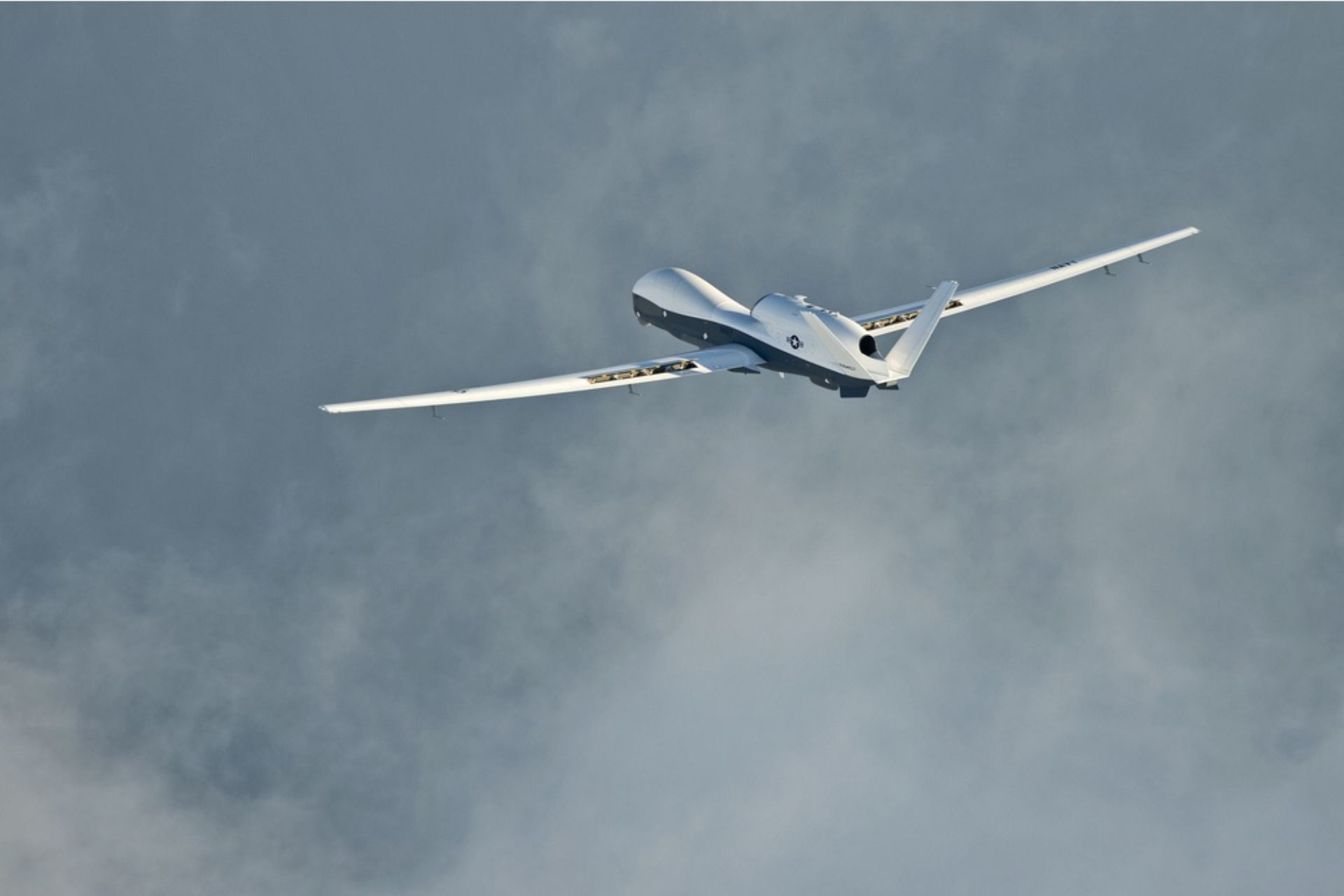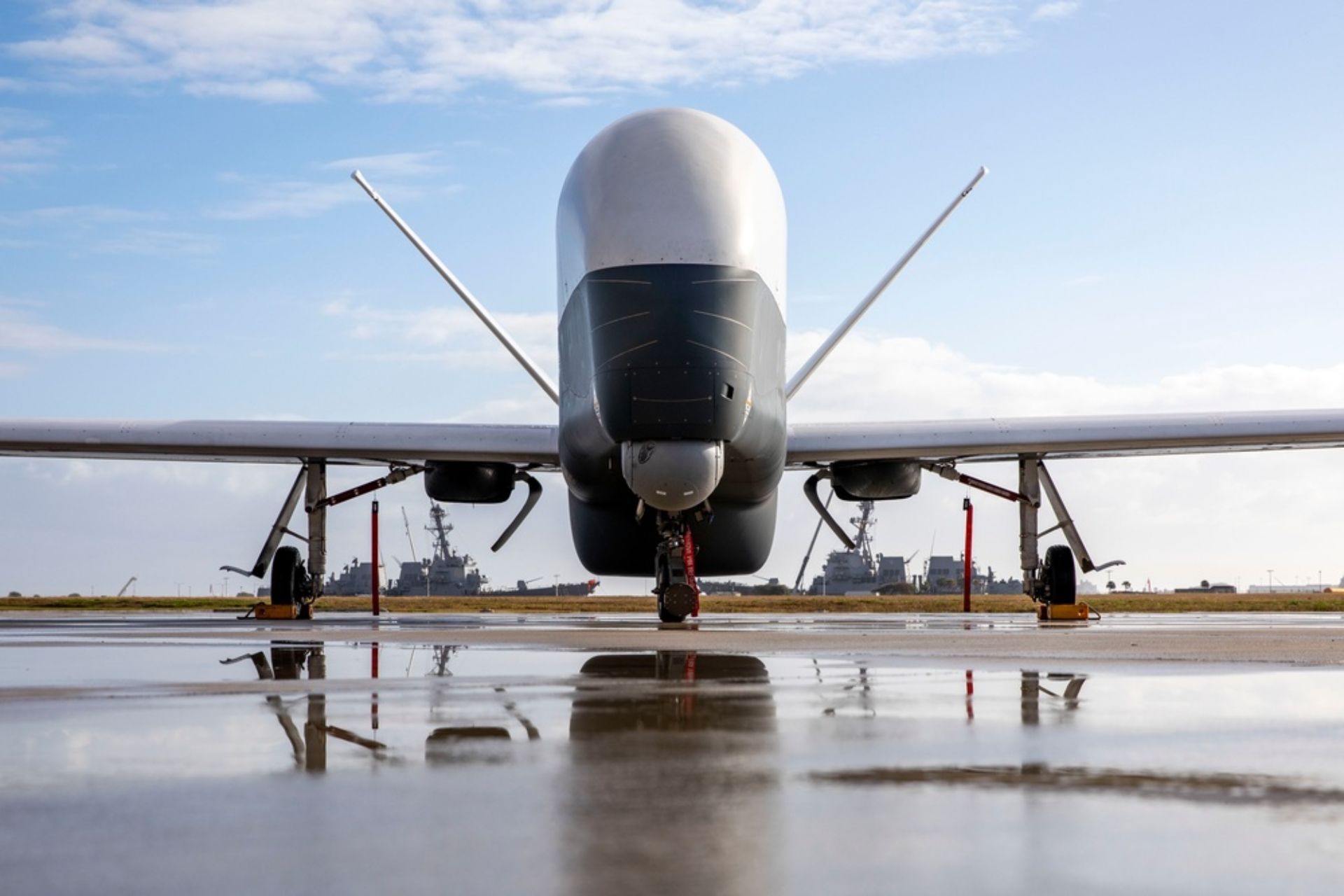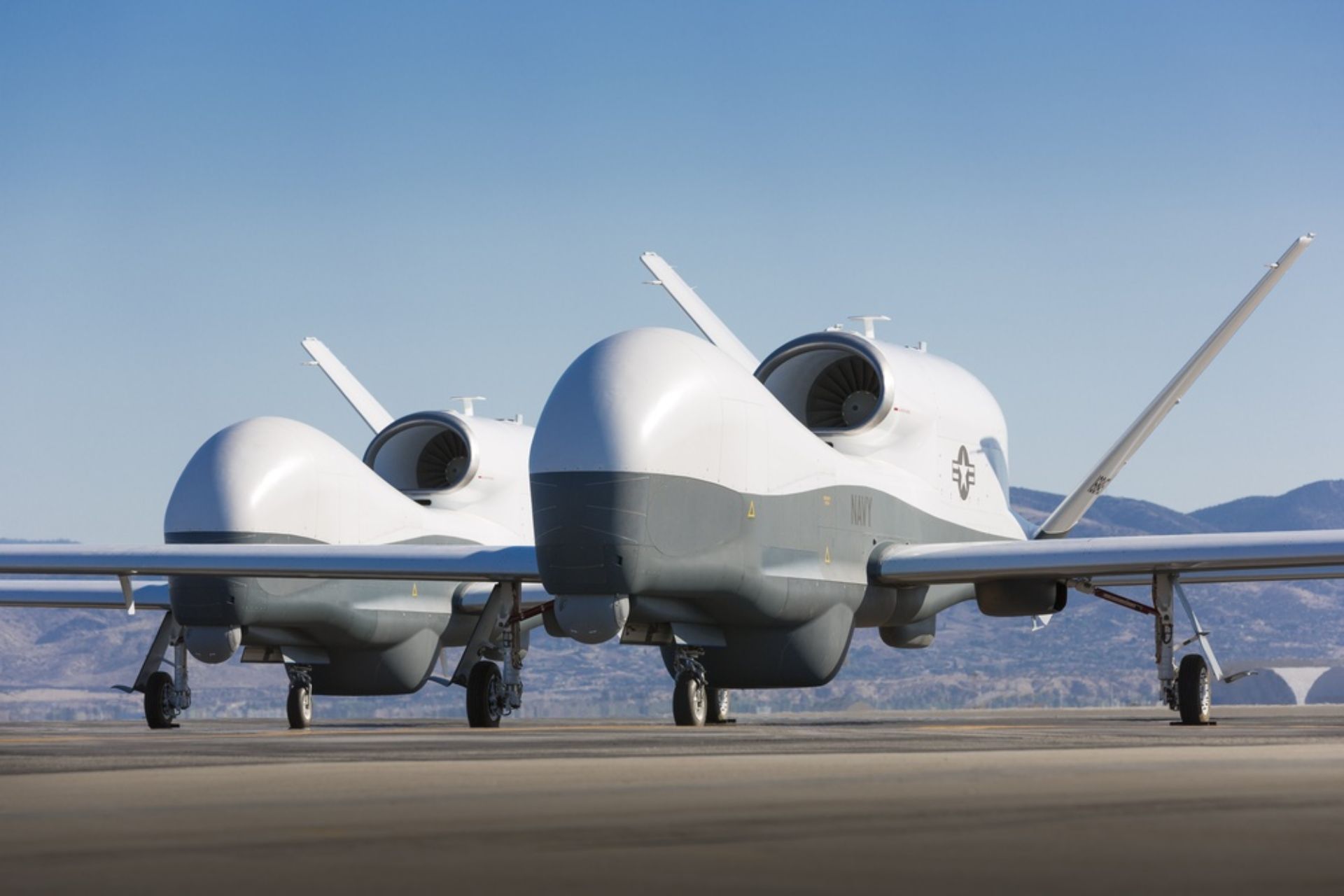Breaking News
Focus: How MQ-4C Triton's sophisticated sensors reveal hidden maritime threats.
The MQ-4C Triton represents a significant advancement in maritime surveillance due to its autonomous capabilities and sophisticated sensor suite. Developed by Northrop Grumman and optimized for extended surveillance missions, the Triton is capable of gathering electronic and communication intelligence while providing detailed visual and radar coverage. Its strategic presence in key regions such as Europe, Asia, and the Middle East enhances the naval forces' ability to monitor and respond rapidly to maritime threats, underscoring its growing importance in the current global security context.
Follow Army Recognition on Google News at this link

The MQ-4C Triton unmanned aircraft system completes its inaugural cross-country ferry flight at Naval Air Station Patuxent River, (Picture source: US DoD)
The MQ-4C Triton is an autonomous system offering persistent maritime ISR (intelligence, surveillance, reconnaissance) capability through multiple advanced maritime sensors. Based on the RQ-4B Global Hawk of the US Air Force, the MQ-4C Triton incorporates sensors from existing Department of Defense (DoD) inventory components. Alongside the manned P-8A aircraft, the MQ-4C Triton is crucial to the US Navy’s Maritime Patrol and Reconnaissance Force (MPRF). The MPRF operates the MQ-4C Triton, while the Commander of the Patrol and Reconnaissance Group (CPRG) sponsors the integration of manned and unmanned systems.
The Triton is optimized for prolonged maritime surveillance missions, providing extensive ISR coverage. Its Multi-Intelligence (Multi-Int) configuration enables it to collect electronic (ELINT) and signals intelligence (SIGINT), complementing its visual and radar surveillance capabilities. At the core of the MQ-4C Triton's advanced capabilities lies its sophisticated sensor suite.
The active electronically scanned array radar (AESAR), with the AN/ZPY-3 radar, is designed for surface search and provides synthetic aperture radar (SAR) imagery. These detailed images allow for the detection and tracking of ships at sea, even under adverse weather conditions or when ships attempt to hide.
The electro-optical and infrared (EO/IR) sensors, mounted in a turret under the nose of the aircraft, offer real-time video capability, enabling precise visual surveillance of maritime targets. These systems can identify ships and objects of interest even without electronic signals.
The Triton’s electronic support measures (ESM) collect electronic intelligence passively, intercepting and analyzing signals emitted by other electronic systems on ships, such as radars and radios. This capability is crucial for detecting ships attempting to go undetected by turning off their sonars.
The AN/ZPY-3 radar uses electronically scanned beams, providing quick and accurate coverage. In SAR mode, the radar generates detailed images of the maritime landscape, distinguishing the shapes and structures of ships. In surface search mode, it detects movement and tracks targets in real-time.
The EO/IR sensors use high-resolution cameras and infrared detectors to provide clear images, day or night. Visual data complement radar information, offering a double verification of detected targets. The Triton’s ESM sensors capture electromagnetic emissions from ships, even when they try to minimize their electronic signature. The Triton analyzes these signals to identify and track ships, using advanced signal processing techniques to distinguish intentionally weak or intermittent emitters.

The MQ-4C Triton Multi-Intelligence (Multi-Int) configuration enables it to collect electronic (ELINT) and signals intelligence (SIGINT), complementing its visual and radar surveillance capabilities (Picture source: US DoD)
To detect ships that turn off their sonars, the MQ-4C uses a combination of methods. It analyzes weak signals: even when ships turn off their sonars, they cannot completely eliminate all electronic emissions. The Triton can detect residual signals or intermittent emissions from other electronic systems on board. SAR imagery creates detailed images of the maritime landscape, detecting anomalies or objects that should not be present. EO/IR sensors allow direct visualization of ships, confirming the presence of targets detected by other means.
Ships may attempt to counter the MQ-4C using electronic stealth techniques, such as reducing their radar and radio emissions. However, the Triton’s ability to combine multiple data sources and use multiple sensors makes these countermeasures less effective.
The MQ-4C Triton is currently used by the US Navy and the Royal Australian Air Force, with plans to introduce it to other armed forces. The US Navy has significantly reduced its initial procurement plans from 70 to 27 units but continues to deploy them strategically worldwide, including in Europe, Asia, and the Middle East, to monitor critical maritime areas and support naval operations.
Northrop Grumman will continue to support the MQ-4C fleets of the US and Australia to ensure these assets remain mission-capable. In March 2023, the US Department of Defense awarded Northrop Grumman a $57 million contract to provide ongoing maintenance, engineering, logistics, and test support for MQ-4C Triton air vehicles, mission control systems, and operator training systems for both the US Navy and the Australian Government.

Despite ships using electronic stealth techniques such as reducing radar and radio emissions, the MQ-4C Triton's ability to combine multiple data sources and sensors makes these countermeasures less effective(Picture source: US DoD)
The conflict in Ukraine has demonstrated an increasing reliance on unmanned aerial vehicles (UAVs). These drones have proven indispensable in war zones, used for a range of missions, including spotting targets for artillery or strike aircraft, providing ISR for ground infantry, giving early warning of incoming enemy personnel, and continuously harassing enemy entrenchments from above.
With the threat from the People’s Republic of China (PRC) and Russia contained as a regional-level threat, attention is turning to the Indo-Pacific theatre for the near future. This theatre of war will face a more adverse maritime environment, demanding greater ISR capabilities. Northrop Grumman’s MQ-4C Triton UAS provides capabilities that allow militaries with interests in the region to monitor oceanic activity more closely.
The Naval Air Station Sigonella in Italy recently welcomed the first forward-deployed MQ-4C Triton. From there, Tritons will provide valuable additional ISR coverage over and around Europe, particularly monitoring activities in the Mediterranean Sea and the Black Sea, as well as North Africa and the Middle East. The US Navy plans to establish a third VUP-19 detachment, but the location remains unclear.
In conclusion, the MQ-4C Triton is a major asset for modern maritime surveillance, combining advanced sensors and sophisticated techniques to detect and track ships, even those attempting to remain undetected. Its presence in strategic regions enhances the naval forces' ability to monitor and respond swiftly to maritime threats, particularly in potential conflict zones such as the Indo-Pacific.


























